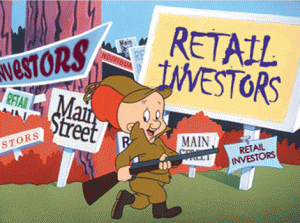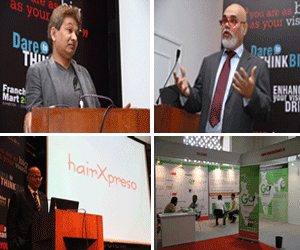Franchise blog india : The instant the Election Commission announced the schedule for the elections to the 16th Lok Sabha, the stock market rose on a big burst of institutional investment. This pushed major indices to record levels. This rise is based on the expectation of a BJP-led government taking charge and reversing the stagflationary trends of the past two years.
We often use the stock market as a barometer of opinion. It is very tempting to assume the ‘smart money’ is right. However, this may be very misleading when it comes to elections. Wealthy investors can be prone to betting on biases or ‘hunches’ because they can afford to. A wealthy investor, or a well-heeled institution, can indulge in wishful thinking and back unlikely outcomes. Such an entity can stand to lose a relatively small sum if it’s wrong and hope to make a large return if it’s right.
The stock market may indicate that investors are hoping for one type of outcome, while the voting machines may log entirely different results. Any democracy with universal adult franchise can throw up electoral surprises, especially if it is a multi-party, first-past-the-post system such as India‘s.
More than that, it is important to understand that, while every investor is a voter, very few voters are investors. Retail investors represent a very small voter segment. Investors are largely urban and high income earners and thus, there is a sample mismatch with voters. The stock market’s moves can tell us something about the voting attitudes of this urban, high-income demographic. But it tells us nothing about the attitudes of the vast majority of voters, who are less urbanised, lower-income, or both.
Also, investing doesn’t run on a one-man-one-vote principle – it’s one-share-one-vote. One billionaire can move the market more than thousands of ordinary people who lack the same financial resources, or even a desire to play the market. So a big move can be deceptive since it might not represent the opinion of lots of people.
Right now, there seems to be some disconnect between the hopes of retail investors, and of institutions. The Indian stock market can be divided into three segments in terms of market cap. We can look at the free float of stocks for non-promoter ownership trends. On a given day, roughly 1,300-1,400 stocks are traded on the NSE. The top 200-odd stocks in terms of market cap are very liquid. The free float in these large caps is largely owned by FIIs and domestic institutional investors (DIIs). The next 300 stocks are also liquid and well-owned by DIIs, with some FII interest. Smaller stocks, with lower market cap than the top 500, are almost exclusively owned by retail investors.
One can directly match net buying and selling figures for FIIs and DIIs and by implication, judge retail attitude. One can also track the ratio of advancing stocks (which show price gains) versus declining stocks (price losses). If there is a poor advance-decline ratio, retail probably has a bearish attitude while a strong advance-decline ratio would imply retail is bullish.
FIIs have pumped over Rs 9,000 crore into the stock market after the election schedule was announced. DIIs have sold close to Rs 4,000 crore, leaving a surplus of Rs 5,000 crore of net buying by FIIs. Retail investors have, by implication, been sellers, since the FIIs bought from somewhere. Advance-decline ratios are nearly flat. Since the elections were announced on March 5, of 1,388 stocks actively traded on the NSE, 717 have gained, 42 have not changed in price and 629 have lost ground. This is a positive advance-decline ratio but it cannot be called strong and may indicate wavering confidence on the part of retail investors.
There is a while to go before elections start. So attitudes could change. But at the moment, the numbers suggest that the FIIs (who don’t represent any voters) are betting on what they see as the most economically favourable outcome; DIIs are not confident of that political scenario; retail is also not very confident.
Retail investors, as mentioned above, come from high-income, highly urban voter segments, which are supposedly the most solid vote base for the BJP. However, as yet, retail seems unprepared to back the BJP wholeheartedly in monetary terms.
Related Post:
1. Is Microsoft really needs to launch Office for iPad?
2. 10 Best Global Franchises 2014
3. Global Retail brands looking new strategies
4. Expanding through franchising
5. How to Work on Your Franchisee Business-4 Accounting Ratios































 +91 9909960054
+91 9909960054
Pingback: Jagdish Chadha
Pingback: Sandeep Rana